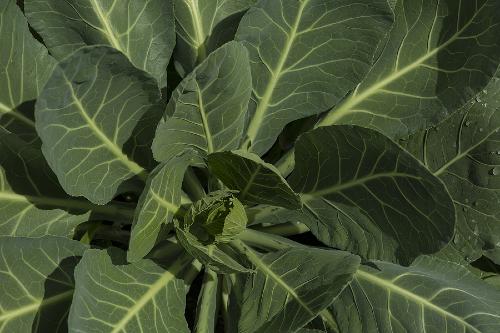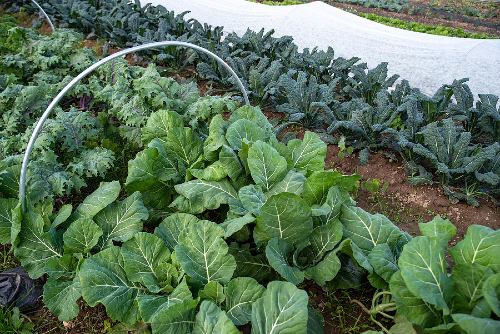Welcome to the first blog in our new “What’s in Season?” series. First up on the list: collard greens!
With the new year comes a new series! We are happy to introduce this new collection of blogs that will feature a seasonal fruit and vegetable each month. The produce of the month is a classic Southern favorite: collard greens!
What sets collard greens apart?
Collard greens (or collards for short) are a type of dark green vegetable that can be cooked in a variety of ways. Southerners have been enjoying collards for a long time. But did you know that collards contain vitamins and minerals that are important for our health?
Here are a few health benefits of including collards in your diet:
- Collards are a good source of fiber. Fiber keeps you full between meals. It can also aid in digestion and control blood sugar levels. [1]
- Collards are also rich in Vitamin K and Iron, both of which are important for a healthy blood supply. Vitamin K also plays a role in maintaining healthy, strong bones. [2]
- Lastly, collards contain Vitamin C which supports our immune system to keep us healthy. [2]

Harvested in Georgia
Did you know that Georgia is the second top-producing state for collard greens? [2] Collards are known as a “cool season” crop that grows best in the fall and spring. These plants are special because they can withstand both warmer and cooler temperatures- perfect for our unpredictable Georgia climate! [2] [3]
Interested in growing your own collards? UGA Cooperative Extension Services advises planting your seeds beginning in August. [3] For more detailed information on how to plant and tend to collard greens at home, click here. When the plant is ready to harvest, you can either pick off the outer leaves as they are ready or harvest the entire plant at one time. Pro tip: harvesting the leaves individually will actually make the plant last longer and you will have fresh greens when you want them! [3]

To purchase collards when they are in season, you can look for them in grocery stores starting in October. Depending on your location, some stores may have locally grown collards in their produce section all the way through June!
If you like to shop at the farmer’s market, try clicking on this link to find local Georgia growers to buy collards from. And check out our What’s in Season chart to keep track of when you can expect other local produce to be available!
Are you new to preparing collard greens? Or do you need a quick refresher on how to chop the leaves for your next recipe? Check out the video below for a quick tutorial!
Collard Green Recipes
Here in the south, collards can be served with almost any meal. They are delicious when cooked alone. If you are looking for new ways to introduce this vegetable into your diet, we have a few recipes in mind that we think you will love.
- Collards and cornbread are commonly served together, but have you ever had them in the same dish? Our recipe for Collard Green Cornbread Muffins showcases this perfect pair.
- This Greens with Beans recipe is a great warm and hearty dish to serve in the cooler months. Enjoy it as a main dish or a side dish.
- Speaking of comfort foods, this Vegan Mac & Cheese with Collards is sure to please a crowd.
- Do you have some leftover greens that you don’t know what to do with? Try this Greens and Beans Dip with our Yeast-Free Skillet Flatbread.
- Do you have extra collard greens in your fridge that need to be used? Collards can take the place of other greens like kale, mustard greens, or turnip greens. Substitute collard greens for the kale in our Savory Pork and Kale Soup or our Slow-Cooker West African Peanut Stew. Note: If you are substituting collards for spinach, it is best to add the greens a little earlier than the original recipe states. This is because collard greens are thicker in texture and require more time to cook until tender.

Purchasing produce that is in season means that you are more likely to buy foods that are locally grown and freshly picked. We hope this series keeps you in the know and helps you incorporate seasonal foods into your menu.
Check back next month to see what fruit or vegetable is up next!
Written by Darci Bell, RDN, LD | Edited by Leslie Davis, RDN, LD, CDCES, and the Nutrition Team
Posted: January 17, 2022
References: